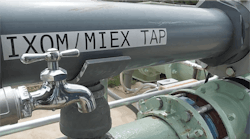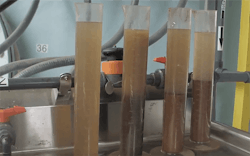Pretreament method delivers more benefits for Louisiana water utility
By Louisa Graham
For John Neilson, administrator of DeSoto Parish Waterworks, finding the right disinfection solution was critical. Not only did the water operator have to comply with new emergency disinfection rules, which more than doubled the required total chlorine residual, as well as Stage 2 disinfection by-products (DBP) regulations, DeSoto Parish also had to find a way to quickly eliminate the deadly Naegleria fowleri parasite from its distribution system.
The DeSoto Parish Waterworks in Louisiana has a long, proud history of delivering safe, clean water to its community of approximately 4,500 residents. Like many waterworks, the increasing pressure to find the right solution to the amassing issues, regulations and compliance requirements was paramount.
The Parish administration decided that the best way to avoid many of the pitfalls of chloramination, such as nitrification, poor-tasting and odorous water, and growth of Naegleria fowleri, was to convert back to free chlorine for disinfection. The challenge was how to reduce organics even further so that free chlorine could be used without violating Stage 2 DBP regulations.
Initially, the Parish experimented with MIEX® resin to see what effect the pretreatment of water using fluidized anion exchange would have on the water supply. MIEX technology uses an ion exchange resin as a pretreatment to remove target contaminants from water and wastewater streams. This pretreatment process is independent of particulates, pH, and many oxidants (such as permanganate) and reduces dissolved organic carbon (DOC) and total oxygen demand (TOD) in water, leading to a reduction in the formation of DBPs. Using this process prior to coagulation, filtration, and disinfection often lowers total net operational costs while conforming to regulatory goals.
“We have achieved twice the chlorine residuals and lowered our DBPs using half of the chlorine dosage compared to prior to pretreating with MIEX,” Neilson said.
One of the side benefits of MIEX pretreatment for this plant was an improvement in the size and structure of the floc and its ability to settle out in the existing sedimentation basins at the flow required by the utility. In effect, the MIEX pretreatment allowed the plant to “high rate” its existing flocculation-sedimentation process and resulted in longer membrane run time and fewer cleanings.
The District is still reducing chlorine levels entering the distribution system as the demand continues to lower, and early DBP samples show compliance. As well as eradicating Naegleria fowleri from its water, the plant is confident of providing clean, safe drinking water to the community. WW
About the Author: Louisa Graham is global head of corporate affairs for Ixom and Ixom Watercare. She has worked in a range of industries, including large-scale construction, telecommunications and energy, bringing expertise and experience to each role to help companies deliver on their brand for customers. She is passionate about the delivery of safe, clean water through innovation and development. WW
About the Author
Louisa Graham
Louisa Graham is global head of corporate affairs for Ixom and Ixom Watercare. She has worked in a range of industries, including large-scale construction, telecommunications and energy, bringing expertise and experience to each role to help companies deliver on their brand for customers. She is passionate about the delivery of safe, clean water through innovation and development.


